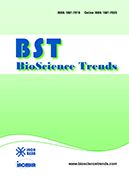Volume 5, Issue 3
Displaying 1-7 of 7 articles from this issue
- |<
- <
- 1
- >
- >|
Policy Forum
-
2011 Volume 5 Issue 3 Pages 89-92
Published: June 30, 2011
Released on J-STAGE: February 15, 2015
Download PDF (93K)
Brief Reports
-
2011 Volume 5 Issue 3 Pages 93-98
Published: June 30, 2011
Released on J-STAGE: February 15, 2015
Download PDF (279K) -
2011 Volume 5 Issue 3 Pages 99-103
Published: June 30, 2011
Released on J-STAGE: February 15, 2015
Download PDF (87K)
Original Articles
-
2011 Volume 5 Issue 3 Pages 104-110
Published: June 30, 2011
Released on J-STAGE: February 15, 2015
Download PDF (132K) -
2011 Volume 5 Issue 3 Pages 111-119
Published: June 30, 2011
Released on J-STAGE: February 15, 2015
Download PDF (124K) -
2011 Volume 5 Issue 3 Pages 120-128
Published: June 30, 2011
Released on J-STAGE: February 15, 2015
Download PDF (1253K) -
2011 Volume 5 Issue 3 Pages 129-138
Published: June 30, 2011
Released on J-STAGE: February 15, 2015
Download PDF (399K)
- |<
- <
- 1
- >
- >|
